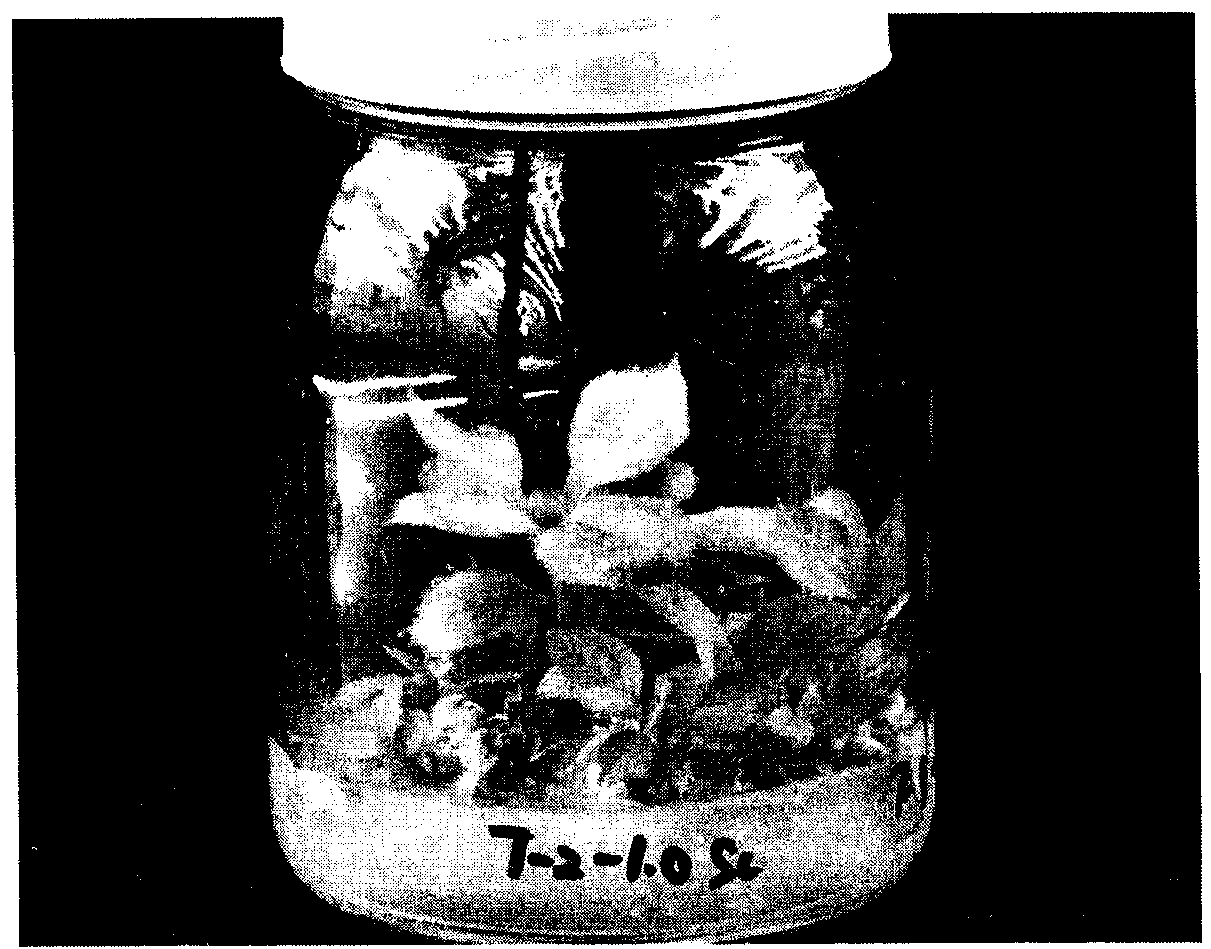Method for establishing Malus sieversii regeneration system based on callus differentiation
A callus and apple technology is applied in the field of establishing a regeneration system of Xinjiang wild apple based on callus differentiation, which can solve the problems of low transformation efficiency and less research on tissue culture systems, and achieve vigorous growth, dark green color, and improved effect on survival
- Summary
- Abstract
- Description
- Claims
- Application Information
AI Technical Summary
Problems solved by technology
Method used
Image
Examples
Embodiment 1
[0029] A kind of method that the Xinjiang wild apple regeneration system based on callus differentiation of the present invention establishes, and this method takes leaf as explant, the induction of callus tissue and adventitious bud, the multiplication of adventitious bud, rooting culture and refining Seedlings and transplanting, the specific operation is carried out according to the following steps:
[0030] Induction of callus and adventitious buds:
[0031] a. Take the young and fully expanded leaves of Xinjiang wild apple aseptic seedlings with a leaf age of 40 days grown in the laboratory as explants, remove the petiole, cut the leaves perpendicularly to the central vein of the leaves with a scalpel, and divide the leaves into equal parts The two parts, using the distal end of the leaf as the contact surface, inoculated into the induction medium for subculture twice, once every 25 days, and cultured in the dark for three weeks, cultured in the light of 2000lx, the light ...
PUM
 Login to View More
Login to View More Abstract
Description
Claims
Application Information
 Login to View More
Login to View More - R&D
- Intellectual Property
- Life Sciences
- Materials
- Tech Scout
- Unparalleled Data Quality
- Higher Quality Content
- 60% Fewer Hallucinations
Browse by: Latest US Patents, China's latest patents, Technical Efficacy Thesaurus, Application Domain, Technology Topic, Popular Technical Reports.
© 2025 PatSnap. All rights reserved.Legal|Privacy policy|Modern Slavery Act Transparency Statement|Sitemap|About US| Contact US: help@patsnap.com



